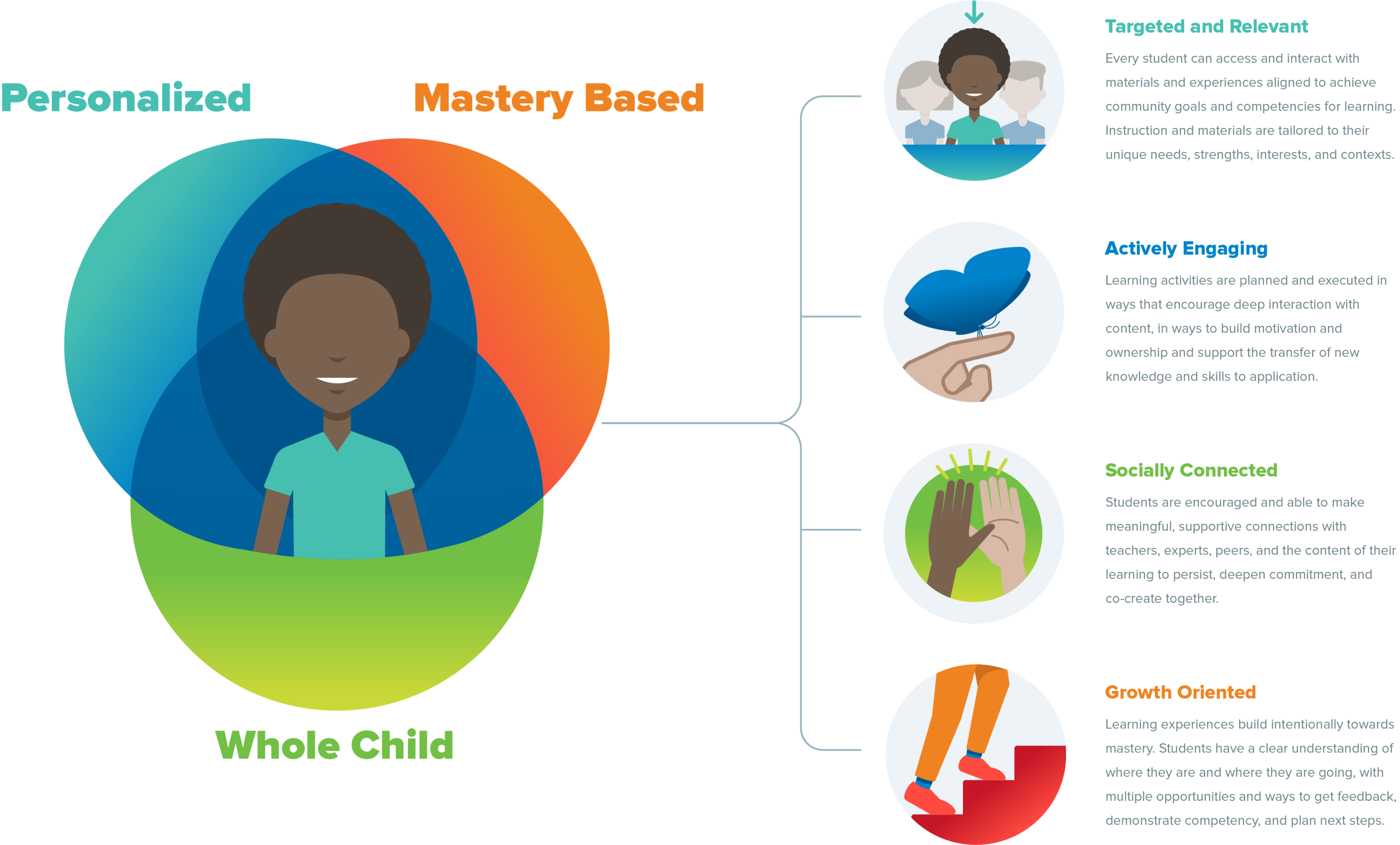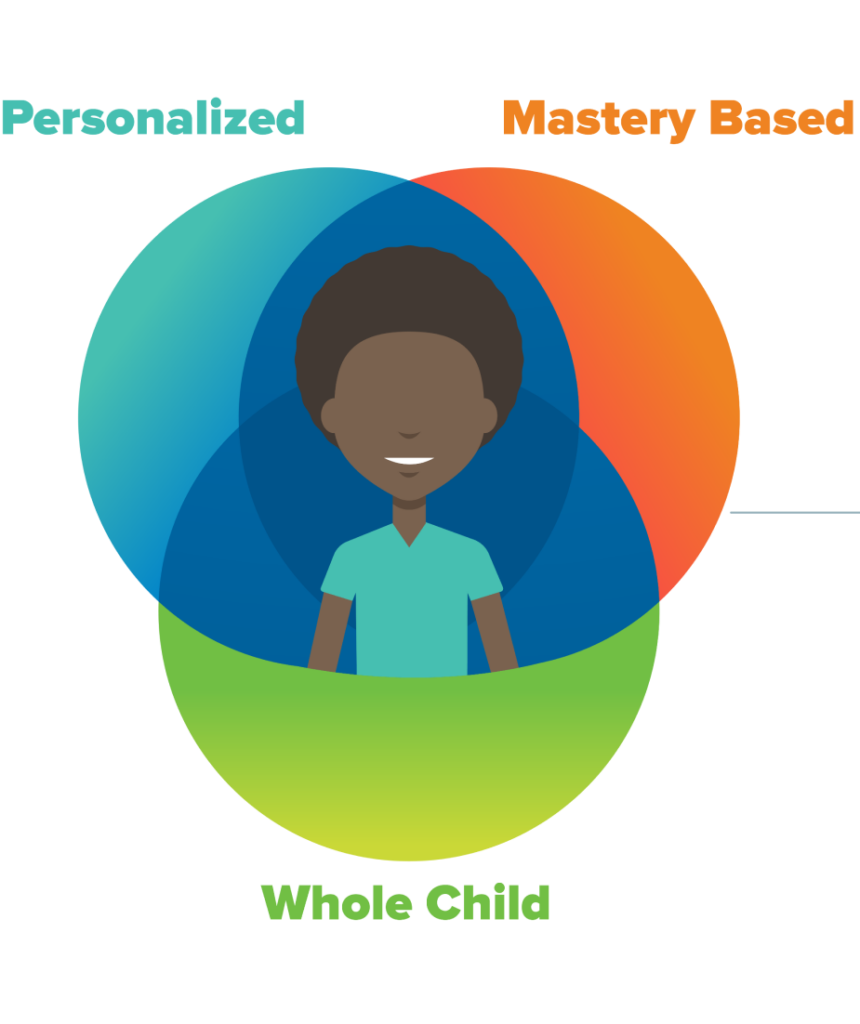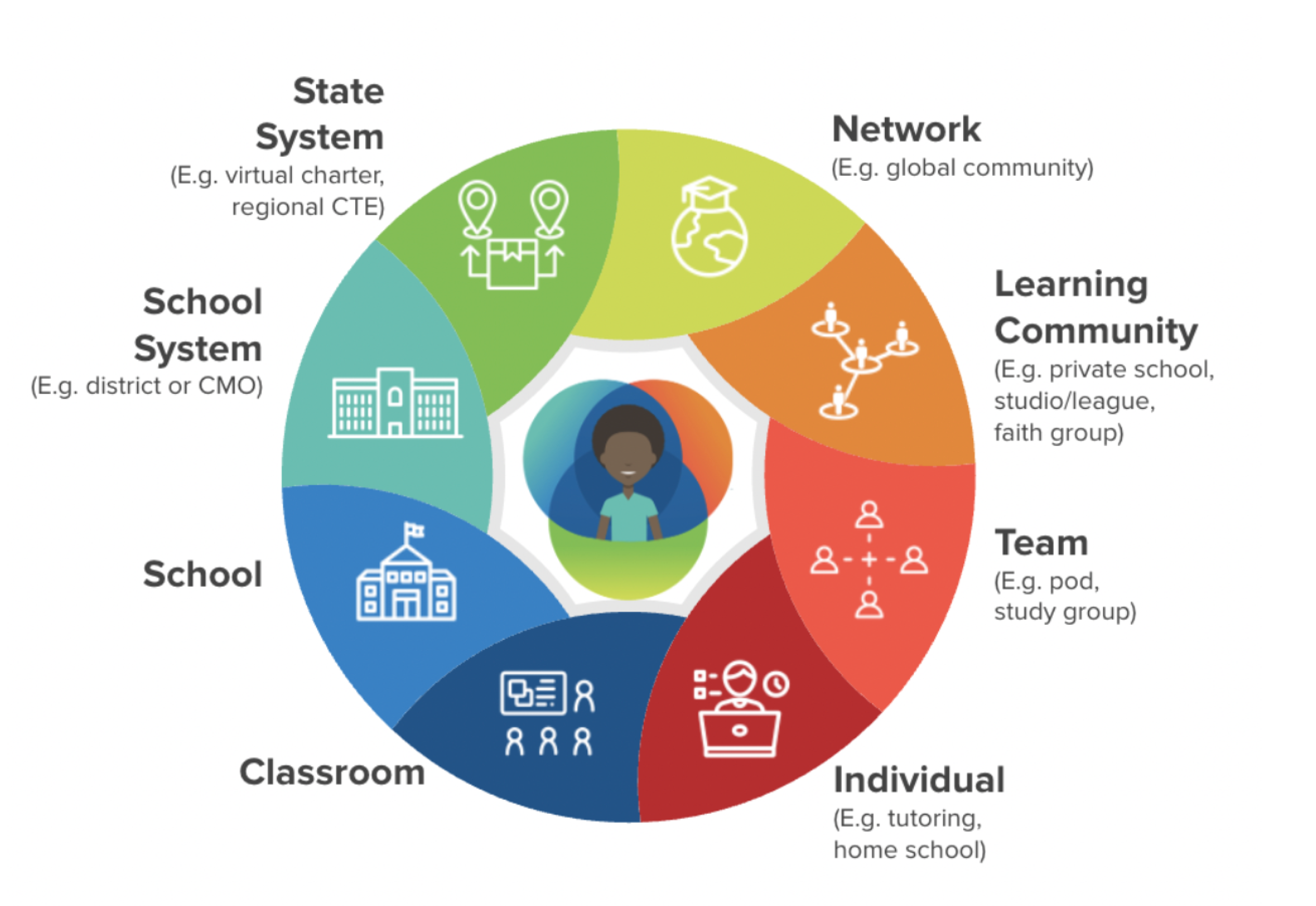- Home
- Envision Change
- Powerful Student Learning
Learning
Characterictics of Powerful Learning
Context, models, and strategies differ. But we know what powerful learning looks like in K-12 education.
Enabling Teaching and Learning Practices
Dive into four key practice areas educators can use to create powerful learning experiences.
Increasing Access to Powerful Learning Opportunities
Expand thinking about how, where, and why kids can experience powerful learning as part of their K-12 experience.
Powerful Learning in K-12 Classrooms
Ensuring every child receives the effective, engaging, and equitable education they need to reach their full and unique potential is no easy task. Teaching and learning models need to differ based on community goals, context, and resources. However, at TLA we believe the science of learning can point us toward three common characteristics of powerful learning:Personalization to each student’s unique needs, strengths, interests, and identities
Focus on mastery of competencies and rigorous learning objectives (rather than time of task or instructional hours)
Intentional support for whole-child development and growth.
In our work with hundreds of school districts and thousands of classrooms, we’ve identified four key practices that educators can focus on to co-create experiences with students, bringing powerful learning in the context of their own classroom, school, and content area.



Digging into Powerful Teaching Practices
Why are these four practice areas so critical to enabling powerful learning? Read on to learn more about why they matter for kids, what they look like, and examples of ways educators enact them.
Experiences that are:
Why It Matters for Learners:
What it Looks Like in the Classroom:
Examples of Strategies Educators Use in Practice:
Experiences that are:
Relevant and targeted
Why It Matters for Learners:
Students enter classrooms with significantly different types of experiences, motivations, cultural foundations, and levels of knowledge and mastery. Further, attention– a critical but limited resource for learning– is most easily directed to things that are individually salient and interesting as well as placed within a students’ existing knowledge. Understanding and addressing these differences across students is critical.
What it Looks Like in the Classroom:
Every student can access and interact with materials and experiences aligned to achieve community goals and competencies for learning. Instruction and materials are tailored to their unique needs, strengths, interests, contexts, and identities.
Examples of Strategies Educators Use in Practice:
Experiences that are:
Actively engaging
What it Looks Like in the Classroom:
Learning is an active process, requiring students to attend to, engage with, and cognitively process new materials. To do this, they must connect new information with their existing knowledge and schemas, elaborating upon and generalizing ideas to increase understanding. They also need to use new skills in different contexts
What it Looks Like in the Classroom:
Learning activities are planned and executed in ways that encourage deep interaction with content, in ways to build motivation and ownership and support the transfer of new knowledge and skills to application.
Examples of Strategies Educators Use in Practice:
Experiences that are:
Socially connected
What it Looks Like in the Classroom:
Human brains are wired for social connection, action, and work. Learning experiences deepen when students have opportunities to share their thinking and processing with others – whether peers, teachers, or other community members. In addition, we are more likely to do higher-order thinking and learning tasks when we experience positive relationships and attachment to others. These enable us to experience safety and belonging, increasing our engagement and resiliency as learners.
What it Looks Like in the Classroom:
Students are encouraged and able to make meaningful, supportive connections with teachers, experts, and peers, along with the content of their learning, to persist, deepen commitment, and co-create together.
Examples of Strategies Educators Use in Practice:
Experiences that are:
Growth- oriented
What it Looks Like in the Classroom:
Developing a growth mindset, the ability to self-direct learning, and reflect metacognitively are all positively associated with long-term academic outcomes. Having the opportunity to apply strategies that increase our understanding and reinforce learning over time, orienting to the development of mastery and competency rather than time on task or completion, offers greater transparency into and opportunities for deeper, durable learning.
What it Looks Like in the Classroom:
Learning experiences build intentionally towards mastery. Students have a clear understanding of where they are and where they are going, with multiple opportunities and ways to get feedback, demonstrate competency, and plan next steps.
Examples of Strategies Educators Use in Practice:
Search Powerful Teaching and Learning Strategies
Reimagining Access to Powerful Learning Opportunities
Emerging technologies have made it possible for educators and students to tap into a greater range of learning opportunities, inside and outside of traditional classroom settings. Education teams are exploring new ways to imagine learners working with educators in a variety of roles, across a variety of spaces, with a variety of tools, to get what they uniquely need to reach their full and unique potential. This is happening in and outside of classrooms, at levels from the individual to wholly new group-based learning communities.
